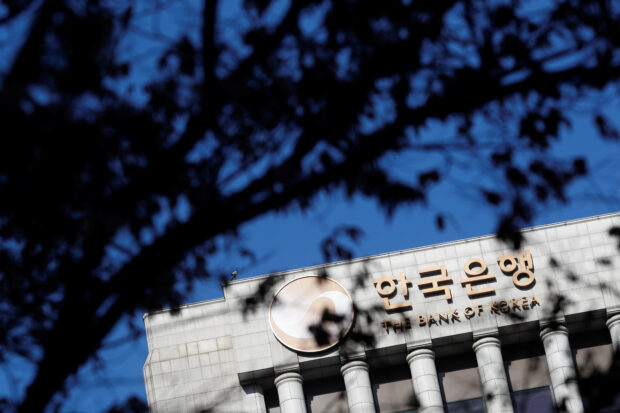
The logo of the Bank of Korea is seen in Seoul, South Korea, Nov 30, 2017. REUTERS/Kim Hong-Ji/File photo
SEOUL — The Bank of Korea is considering overhauling how it provides guidance on the likely future path of interest rates by extending the timeframe and giving visual estimates in a bid to boost transparency, said four sources familiar with the issue.
The proposal, however, faces opposition from at least one of the central bank’s seven-member governing board and a senior official, they said, amid concerns telegraphing future policy could undermine public confidence in policy, particularly if conditions suddenly change.
Since first flagging the idea during a speech at the Federal Reserve’s Jackson Hole symposium in 2022, Governor Rhee Chang-yong has been developing plans to regularly map out conditional forward guidance on policy interest rates for six months or longer.
Those projections would be accompanied by more detailed growth and inflation forecasts, according to sources familiar with the discussions.
READ: South Korea inflation quickens in February after 3 months of easing
The move would represent a major change to how the bank produces and communicates policy and be part of a wider push to improve transparency and boost public understanding of its actions.
Any visual estimates on the likely course of monetary policy would be the first by the BOK, which currently issues mostly verbal forward guidance.
South Korean authorities have been trying to introduce reforms across financial markets as the export powerhouse attempts to improve governance, transparency and communication.
Reforms across financial markets
“One of the many formats under review is charting the future interest rate path, as the point is to give quantitative forward guidance,” said one of the sources, on condition of anonymity due to the sensitivity of the matter.
Asked if it could be similar to the Fed’s “dot plot,” the de facto monetary policy forecast of the U.S. central bank, a second source said it was too soon to tell but that the new format “should aim to be straightforward, to leave little room for interpretation.”
READ: Bank of Korea extends rate pause as inflation cools
A BOK spokesperson declined to comment when asked if a new format of forward guidance was being discussed.
Any overhaul of the bank’s communication tool would need to be approved by the seven-member board, according to the BOK.
Analysts expect the BOK to cut its key interest rate by 50 basis points by the end of this year from 3.5 percent currently as inflation slows to the mid-2 percent range.
The BOK’s current approach to forward guidance is on a meeting-by-meeting basis, which means central bank watchers mostly scan monetary policy statements for key words such as “sufficiently long period of time” or “for the time being.” No charts or quantitative estimates are provided in the statement.
At recent post-meeting press briefing, Governor Rhee has provided three-months-ahead indications on where interest rates could go, making the news conferences the most closely watched form of communication for BOK watchers.
Forward guidance expansion
Starting from the second half of this year, the bank’s research team will publish growth and inflation forecasts on a quarterly basis from the current half-yearly basis, a plan Rhee announced in January.
“This is to build foundations for forward guidance expansion,” one BOK official said.
Internal concerns about more explicit forward guidance, however, center on the experiences of other central banks such as the Fed and the Reserve Bank of Australia, which have been criticized for failing to foresee recent price spikes in their projections.
Such miscalculations can lead to sharp U-turns on policy signals, which can in turn lead to financial market volatility as investors rush to reposition themselves.
“For a small open economy like Korea projections can go wrong more easily and risks such as currency volatility are outside of anyone’s control,” one of the sources said.

